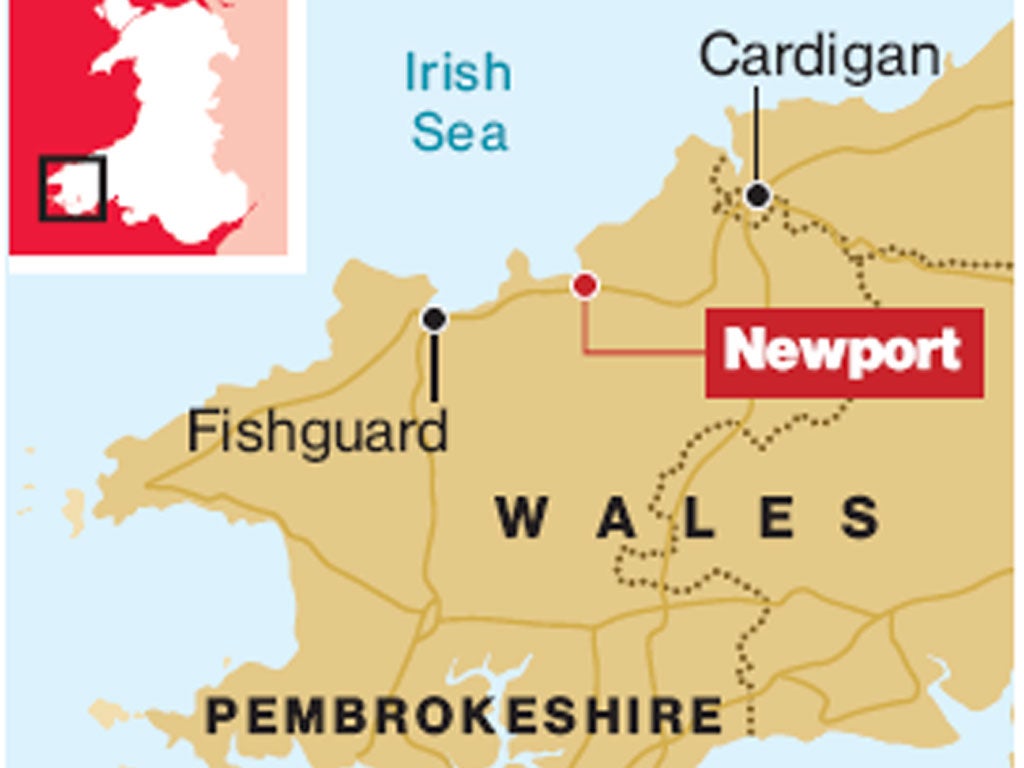Secrets of the earliest Britons could be hidden in 5,000-year-old tomb

Archaeologists have discovered the remains of a Neolithic portal dolmen, one of Western Europe's oldest ritual burial chambered monuments, in an isolated field in Wales.
It is thought the tomb was built from giant boulders about 5,500 years ago. Its capstone bears a seemingly random pattern of dozens of circular holes gouged into its surface – symbols of Neolithic or Bronze Age ritual burial activity.
What makes it particularly interesting is that the site has rare remains of human bones and shards of decorated pottery. An official burial licence must now be sought before the bones can be removed, but eventually radiocarbon-dating and other tests planned for the remains may give new insight into our early farming ancestors.
The archaeological excavation near Newport in Pembrokeshire has been led by George Nash, Thomas Wellicome and Adam Stanford, who plan to resume work in September.
Dr Nash, an archaeologist and lecturer at Bristol University, said: "The dolmen is the earliest type of monument you can find in the Neolithic era.
"It is very rare to discover such a site of this age. Since 1600, intense farming practices have meant a lot of ancient sites were destroyed. What is unique about the whole thing is that we are dealing with thick, acidic soils but the bones and the pottery have survived."
While the tomb is thought to date from 3,800BC, the pottery with its grooved design appears contemporary with late Neolithic activity, Dr Nash believes. Further finds include two perforated, sea-worn shale beads, each about 4.5cm in diameter, which are thought to be some form of jewellery.
Dr Nash has linked them to hundreds of examples found in the 1970s at a nearby coastal settlement from the Early Mesolithic period 9,000 years ago. He believes his Neolithic site may have even older, Mesolithic origins.
The marked stone – now thought to be the capstone of the dolmen – was long ago tilted on its side in a field off the beaten track. Although its existence was recorded in 1929, and it was designated as a scheduled monument, it was just thought to be an ancient standing stone some 1.2m high
Dr Nash said: "In 1972, the archaeologist Frances Lynch [only] referred to the site as a possible portal dolmen site because of the shape of the capstone. She did no geophysical survey, no excavation. It was just a speculative comment. Until we dug it, this site had never been investigated."
A geophysical survey has revealed the lines of the dolmen, including a linear stone alignment in keeping with an ancient burial monument, previously mistaken for a field boundary.
Dr Aron Mazel, an archaeologist and lecturer at Newcastle University, said the discovery of a Neolithic dolmen was "very exciting because there are not many of them about".
He added: "What is particularly interesting about this one is the number of ancient capmarks on the slab ... and the recovery of human remains with pottery. They will be able to extract a lot of information from the bones: where these people came from, where they lived, and whether they came from far."
Join our commenting forum
Join thought-provoking conversations, follow other Independent readers and see their replies
Comments